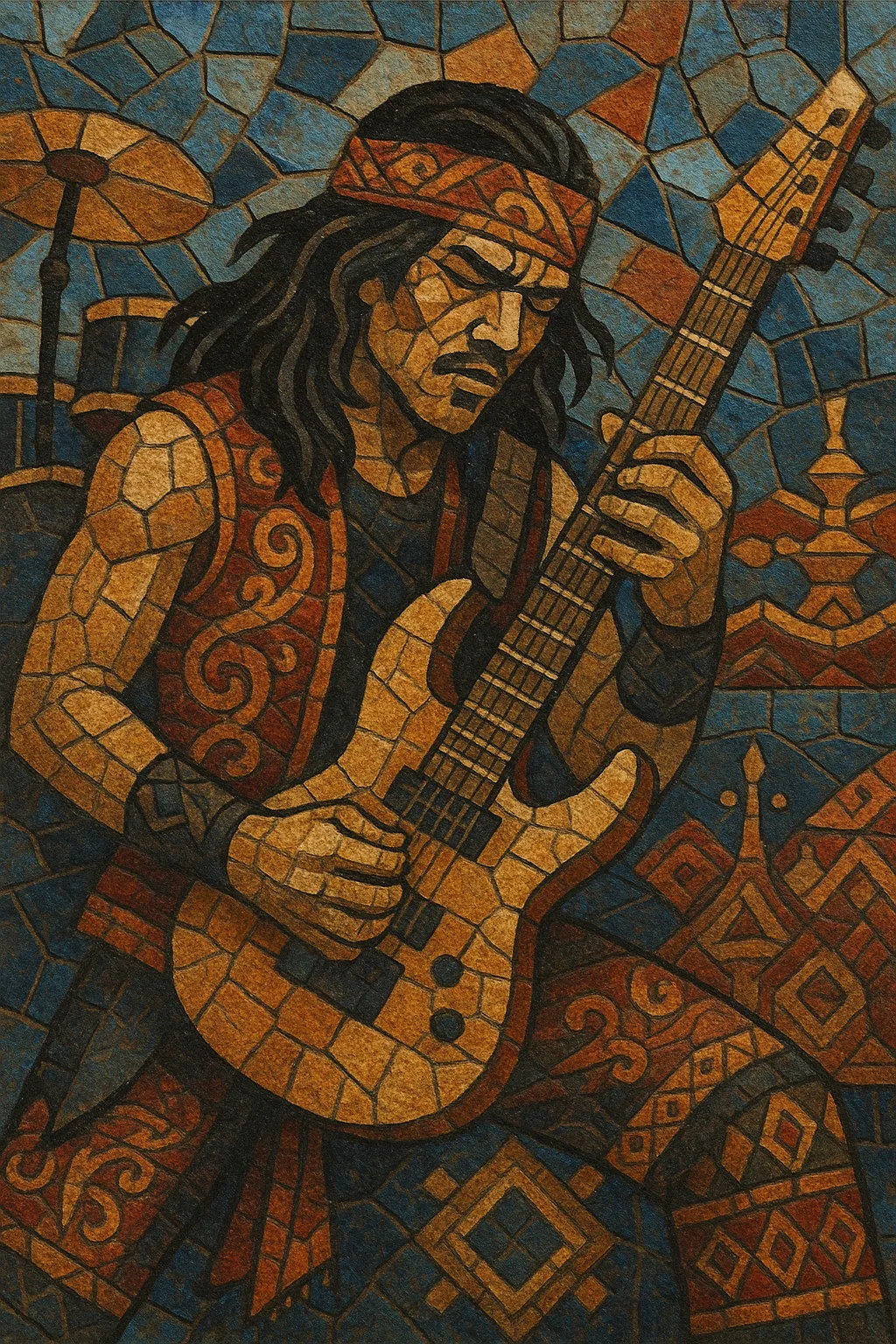Your digging level
Description
Indonesian rock is the broad umbrella for guitar-driven popular music from Indonesia, blending Western classic, hard, and progressive rock with local sensibilities, Bahasa Indonesia lyrics, and occasional traditional melodic or rhythmic inflections.
Its core sound ranges from riff‑based hard rock and bluesy classic rock to 1990s alternative and grunge aesthetics. Many acts favor memorable, sing‑along choruses, melodic guitar leads, and groove‑forward rhythm sections. Some landmark experiments weave gamelan‑like ostinati, pentatonic figures, or modal flavors into modern rock arrangements, giving the scene a distinctly Indonesian character.
History
Rock entered Indonesia alongside global Beat and psychedelic currents. Early bands absorbed British and American rock, blues rock, and hard rock, while groups such as God Bless and AKA helped codify a homegrown approach: big riffs, emotive vocals, extended solos, and arena‑ready songwriting. Progressive and psychedelic touches (e.g., long forms, keyboard textures) also appeared, as did rare but significant fusions with Indonesian musical ideas (notably Guruh Gipsy’s gamelan‑tinged prog experiments).
By the 1980s, Indonesian rock was a fixture of the mainstream. Hard rock and metal‑leaning bands shared space with melodic, radio‑friendly pop‑rock. The 1990s alternative wave—grunge, indie, and post‑punk influences—reshaped production and songwriting, yielding a surge of massively popular groups that wrote direct, relatable lyrics in Bahasa Indonesia and favored catchy, anthemic hooks.
Parallel to chart successes, an indie/underground ecosystem flourished in cities like Jakarta, Bandung, and Yogyakarta. Garage rock revivals, post‑rock, and experimental hybrids appeared, while DIY venues, zines, and independent labels supported a prolific scene. Bands explored heavier edges (hardcore/metal crossovers) as well as artful, lyrically incisive indie rock.
Contemporary Indonesian rock continues to span mainstream pop‑rock, classicist hard rock, and adventurous indie. The shared DNA—riff‑forward guitars, singable melodies, and emotive storytelling—remains, while artists freely blend rock with local rhythmic feels, modern production, and cross‑genre collaborations.





